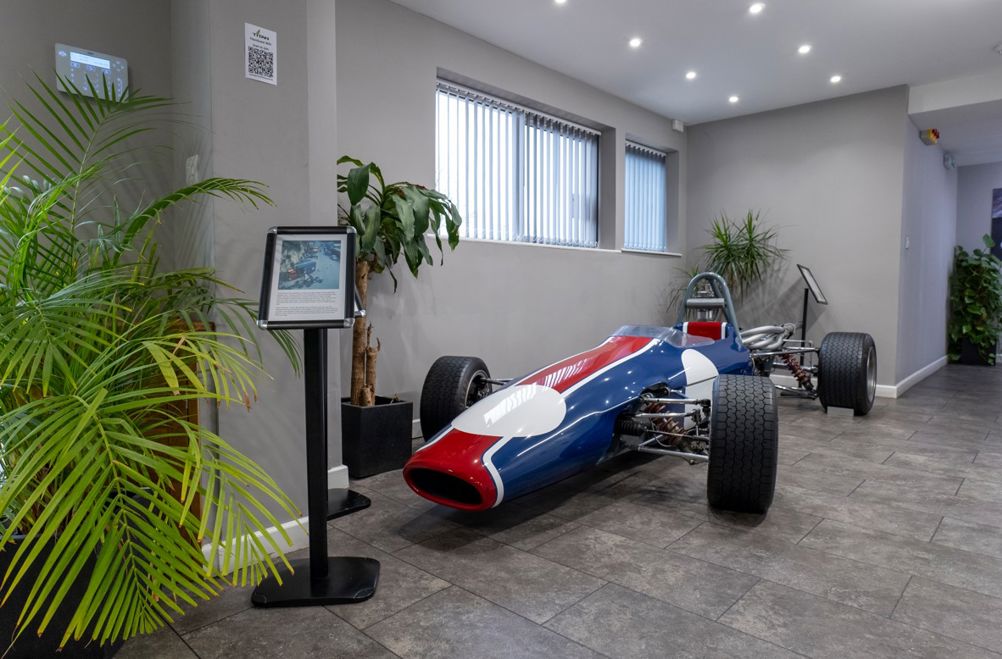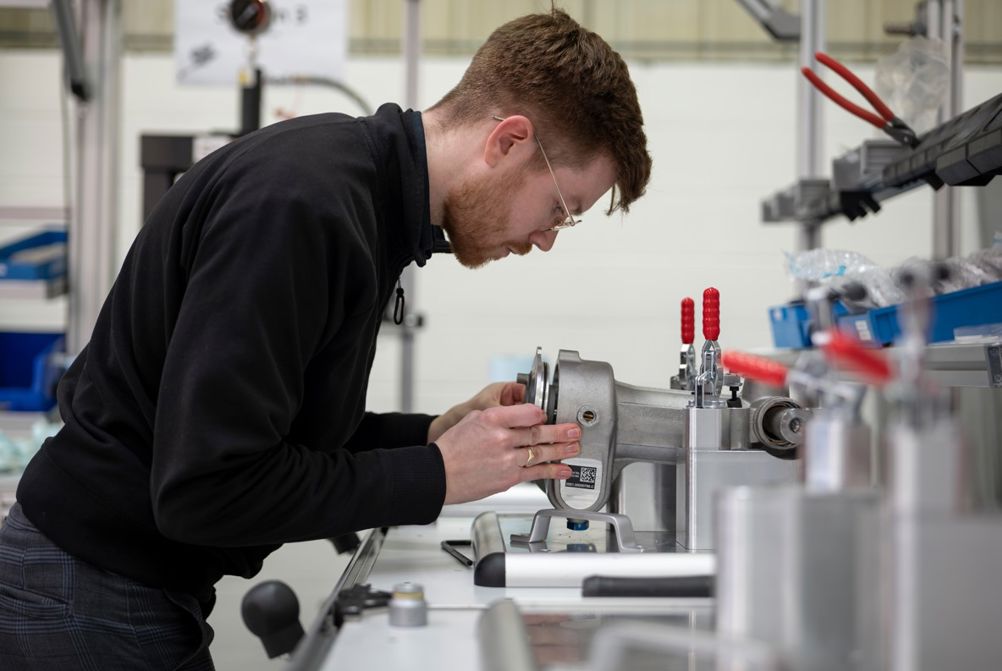It’s often not the biggest but the smartest that drive innovation. That’s particularly true in these disruptive times, with the automotive industry in a race to adopt low-carbon technologies and active safety systems.
A decade and a half ago, Tesla was a startup, producing less than a thousand cars a year using a chassis built in Norfolk. Now, it’s the most valuable carmaker in the world.
There are other startups out there hoping to pull off the same trick – notably the likes of Ree and Arrival in the light commercial market. Alongside that, the UK has a small army of niche car manufacturers, grappling with how to confront a similar set of technological challenges to the large OEMs without the same resources.
The challenge here is volume, explains George Lendrum, CEO of engineering and manufacturing firm Titan: “The Tier Ones are generally geared up to support large OEMs. If a niche manufacturer approaches them for a steering system, it might cost £5 million and take three years to develop, at the end of which they’ll get something that’s based on an existing product. That’s not really what they need.”
there’s definitely a role for niche companies within the automotive mainstream
The Cambridgeshire company is one of a number of niche suppliers aiming to plug that gap with a high-tech approach that’s tailored to the needs of low-volume manufacturers.
Like many at the specialist end of the British automotive industry, Titan’s roots are in motorsport. The company was set up in 1963 by aspiring racing driver Charles Lucas to support his efforts in Formula 3. He went on to run Lotus’s works Formula 3 team for the 1966 season, before striking out on his own and building a series of cars under the Titan banner.
Car production continued until 1976, when Titan (now under new ownership) reverted to supplying parts for other manufacturers, largely on the motorsport side. Ex-RML and Cosworth engineer George Lendrum was brought in nine years ago to expand the operation and tap into the niche automotive sector, focusing on steering systems. This was already a key area of expertise at the company, which had supplied steering parts for the Lotus Elise, among others.
It proved to be a successful decision. Since 2014, Titan has grown from 30 people to nearly 90, quadrupling its turnover along the way. Last year Lendrum led a management buyout of the firm, becoming its CEO.

“We’re developing the organisation from what was essentially a machine shop 20 years ago into something which is more technology driven,” he told The Engineer. “On the steering side, electrification is leading to heavier vehicles, which means more applications require power assistance. Once you’ve got an electric vehicle it becomes a no-brainer to use electric power assisted steering (EPAS). And that then opens up all sorts of new options around control and automated driving.”
This decision is largely out of the hands of the manufacturers. Complex safety features such as Lane Keep Assist (LKAS) and Automated Emergency Braking (AEB) are starting to become a pre-requisite for Type Approval, impacting specialist manufacturers that once existed in a totally analogue world.
Good to torque
At its heart, an EPAS system is an electric motor that can transmit torque both as a steering input and as feedback from the steered wheels. It makes little difference whether that torque request comes from a human driver turning the steering wheel or from an automated control system. Likewise, the sensory feedback can either be relayed to the driver’s hands or direct to a computer.
“EPAS systems are inherently more challenging, because you’ve got more inertia for the feedback to overcome than there would be in a manual or hydraulic system. That damps down the feedback, but we’ve got the technology to restore that,” explained Titan’s technical director Paul Wilkinson.
While traditional hydraulic and electro-hydraulic steering relies on a passive system of valves to control the assistance curve, EPAS can be tuned to provide almost any behaviour – including steering the vehicle on its own.
“One of the things that we’re really excited about is the opportunity to tune the feedback to what different customers want,” said Wilkinson. “We have a lot of customers on the high-performance side for whom steering feel is a really important part of their vehicle DNA. We can give their engineers and their development drivers access to look inside and change the parameters, which is something they don’t always get with a system supplied by a big Tier One.”
Titan’s current projects include a new 48-volt steer-by-wire system, which requires no mechanical connection to the wheels. Even the motor is produced in-house. The company has employed similar steer-by-wire control technology on a four-wheel steer vehicle that has four independent corner modules, capable of being steered individually. This results in spectacular agility, and it allows the corner units to be swapped in around 20 minutes for servicing and repairs.
Elsewhere in the automotive industry, manufacturers are taking a more evolutionary approach. Titan predicts that there will be a transition period where features like LKAS become a requirement while some vehicle platforms are still using hydraulic steering systems with no in-built control capability.
In response to this, the company has developed a supplementary system that can be piggybacked onto a hydraulic setup. The assistance is still provided by the vehicle’s existing hydraulic system, but an electric motor – typically mounted onto the column – can be used to provide additional control inputs. This opens up the option of features such as LKAS and automated parking on what is fundamentally still a traditional hydraulic steering system.
Functional safety
The functional safety requirements for a passive EPAS system aren’t really any different to a hydraulic setup. All it really needs to do is ensure that the vehicle can still be steered – albeit with greater physical effort – if the power assistance system were to fail. The advent of advanced driver assistance systems (ADAS) and partial autonomy, however, is redefining these requirements.
“As soon as you start going further into automated driving, you have to make sure that the steering system is not just fail-safe but fail-functional,” said Wilkinson. “So that brings extra layers of redundancy and extra checks. There’s a lot of work around proving that the system genuinely is fail-functional and getting that certified.”
In a nutshell, the automated steering system has to ensure that it remains at least as capable as a human driver in the event of a failure. To do this, the automotive industry is turning to aerospace practice, with multiple levels of redundancy.
“The way we deal with these issues is by having redundant systems that talk to each other,” said Wilkinson. “So there isn’t just one steering angle sensor, for instance, there are two. If they have a difference of opinion, then there’s an algorithm to check the validity of both readings, which can make a decision on which reading is going to be accepted and then safely move the vehicle into a limp home mode or recovery mode if required.”
Quality management is also closely tied to functional safety. The gold standard for large OEMs and their suppliers is ISO/TS 16949. Although not universally required, niche manufacturers are starting to adopt this standard too.
“We found that ISO 9001 really benefits you as a business in the processes and procedures that you put in place, but 16949 takes that to the next step,” said Lendrum. “It’s almost overkill for much of our work, but it’s what the OEMs at the larger end of the spectrum we work on are starting to demand.”

So stringent are the automotive quality requirements these days, that Titan was able to segue straight into medical production during COVID, Lendrum recalls: “We sent everybody home on the first day of the pandemic. And within a week, we had them all back making ventilators, because motorsport and niche automotive was seen as the most responsive industry to get the job done. We were involved in four different ventilator projects, working 60 hours a week for six months producing parts. And then we had to transition back to being an automotive company.”
This agile approach is a fundamental pillar of the motorsport industry, where new parts are routinely designed, validated and manufactured between one race weekend and the next. But those special skills also have a role to play in the mainstream automotive market.
“A lot of big OEMs have significant R&D facilities in the UK. We work with a number of them on low volume products for their development vehicles,” said Lendrum . “We know that we’re unlikely to still be involved once it gets to 100,000 units a year, but there’s definitely a role for niche companies within the automotive mainstream.”
The beauty of companies like Titan is that they provide a robust supply chain that can match the pace of these low volume projects, whether the demand comes from a newly-established startup or a global giant. After all, if the past 15 years has taught us anything, it’s that one can very rapidly become the other.
More from The Engineer
- https://www.theengineer.co.uk/content/opinion/comment-steering-safety-and-cybersecurity-in-autonomous-vehicles-with-digitalisation
- https://www.theengineer.co.uk/content/news/fresh-funding-to-help-uk-s-advanced-electric-machines-scale-up-sustainable-ev-motor-production-1
- https://www.theengineer.co.uk/content/in-depth/expert-q-a-micromobility-1











McMurtry Spéirling defies gravity using fan downforce
Ground effect fans were banned from competitive motorsport from the end of the 1978 season following the introduction of Gordon Murray's Brabham...